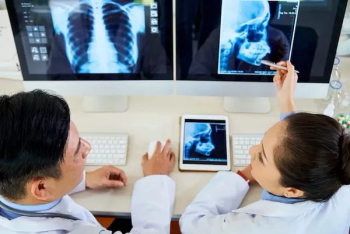
'A Call to Arms' for Electronic Transfer of Medical Images Between Institutions
In a recent video interview, Arun Krishnaraj, MD, MPH and David Larson, MD, MBA, discussed the continued use of physical media to transport medical images between different health-care facilities, resulting inefficiencies and delays with patient care, and the initiative to create a linked multi-hub model to end this dated practice once and for all.
Despite the technological advances in transferring electronic health information, medical imaging data, to this day, is predominantly exchanged between instiutions via physical media (such as a CD or flash drive) that patients carry to an appointment at another facility.
Emphasizing the impact of this seemingly dated practice on workflow efficiencies within radiology and the broader field of health care, Arun Krishnaraj, MD, MPH and David Larson, MD, MBA, said the continued reliance on patients to transport medical images via physical media (such as a CD or flash drive) can lead to delays in patient care.
In their quest to change this dynamic, Drs. Krishnaraj and Larson recently co-authored a provocative article, “
“Everyone in the imaging community should really see this as a call to arms to work with our imaging vendor exchange communities to solve this problem for the benefit of patients,” emphasized Dr. Krishnaraj, Chief of the Division of Body Imaging with the Department of Radiology and Medical Imaging at the University of Virginia School of Medicine.
For more insights from Drs. Krishnaraj and Larson, watch the video below:
Newsletter
Stay at the forefront of radiology with the Diagnostic Imaging newsletter, delivering the latest news, clinical insights, and imaging advancements for today’s radiologists.




